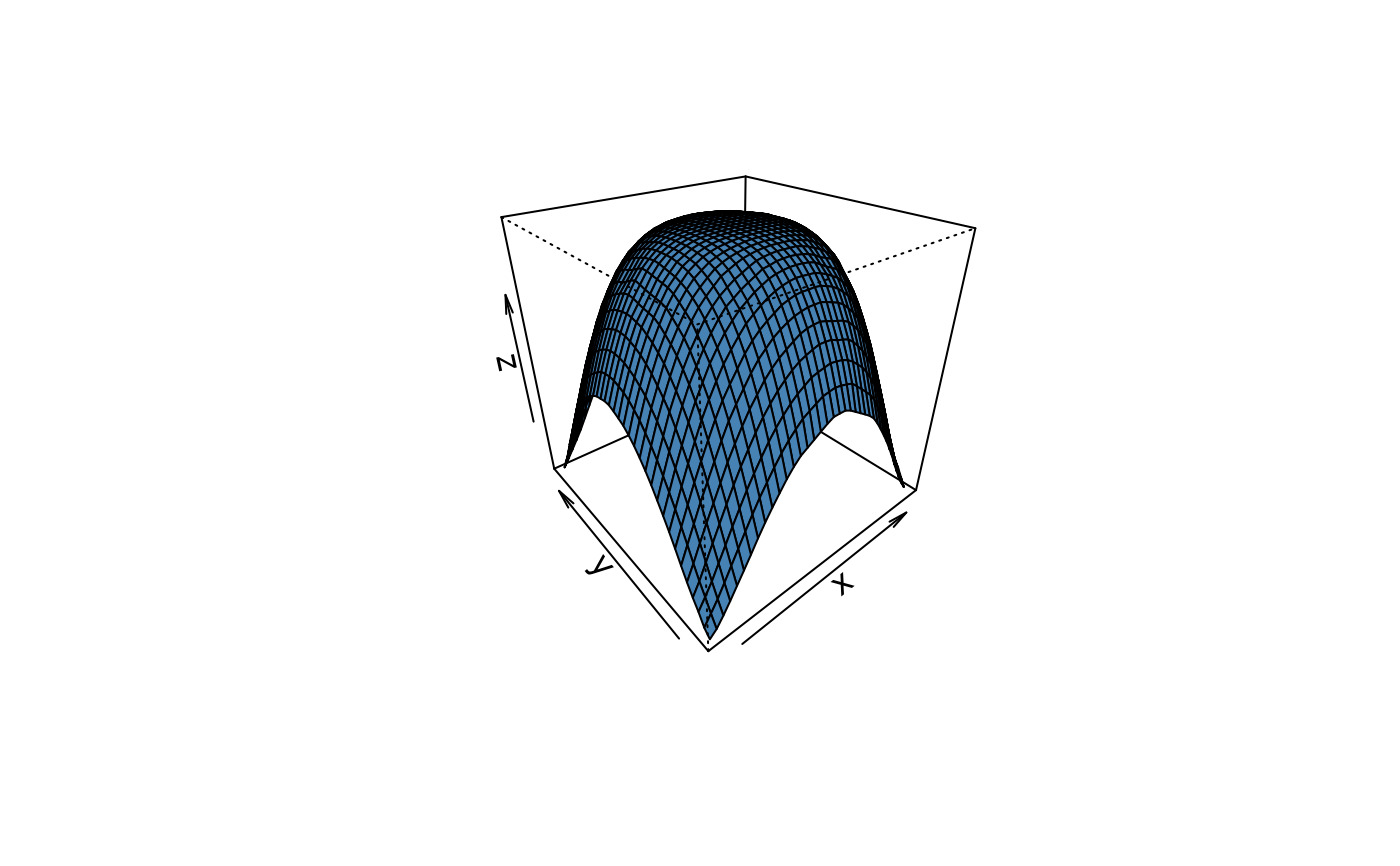Bivariate Linear Interpolation
stats-interpLinear.RdBivariate Linear Interpolation. Options are available for gridded and pointwise interpolation.
Arguments
- x, y, z
for
linearInterpthe argumentsxandyare two numeric vectors of grid pounts, andzis a numeric matrix or any other rectangular object which can be transformed by the functionas.matrixinto a matrix object. ForlinearInterppwe consider either three numeric vectors of equal length or ifyandzare NULL, a list with entriesx,y,z, or named data frame withxin the first,yin the second, andzin the third column.- gridPoints
an integer value specifying the number of grid points in
xandydirection.- xo, yo
for
linearInterptwo numeric vectors of data points spanning the grid, and forlinearInterpptwo numeric vectors of data points building pairs for pointwise interpolation.
Value
for linearInterp, a list with at least three entries,
x, y and z. The returned values, can be used
directly in persp and contour 3D plotting methods.
for linearInterpp, a data.frame with columns
"x", "y", and "z".

